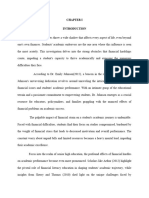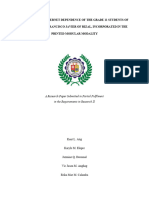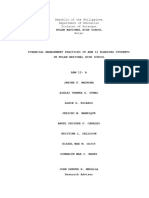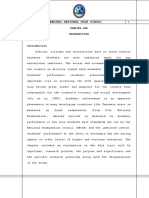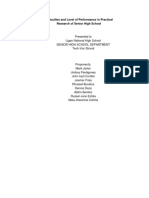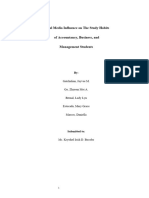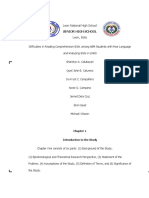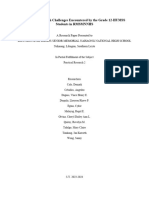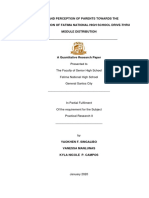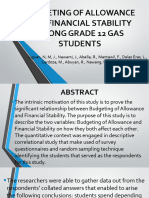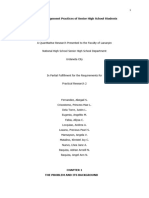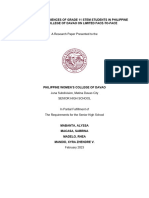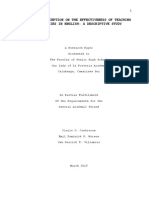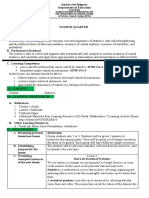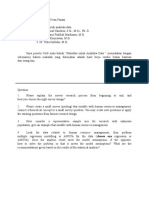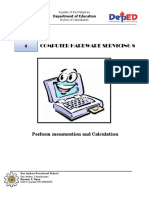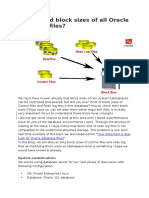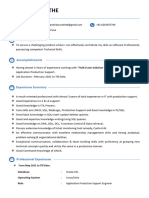0% found this document useful (0 votes)
370 views8 pagesChapter 3
The document describes the research methodology used in a study about the effect of financial problems on academic performance of senior high school students. A descriptive and qualitative method was used to collect data through questionnaires. Random sampling was used to select 99 senior high students across four strands as respondents. The questionnaires were used to gather data on financial problems and academic performance. Statistical tests like percentage, mean, standard deviation, and z-test would be used to analyze the data.
Uploaded by
ANGELIKA CORTEZCopyright
© © All Rights Reserved
We take content rights seriously. If you suspect this is your content, claim it here.
Available Formats
Download as DOCX, PDF, TXT or read online on Scribd
0% found this document useful (0 votes)
370 views8 pagesChapter 3
The document describes the research methodology used in a study about the effect of financial problems on academic performance of senior high school students. A descriptive and qualitative method was used to collect data through questionnaires. Random sampling was used to select 99 senior high students across four strands as respondents. The questionnaires were used to gather data on financial problems and academic performance. Statistical tests like percentage, mean, standard deviation, and z-test would be used to analyze the data.
Uploaded by
ANGELIKA CORTEZCopyright
© © All Rights Reserved
We take content rights seriously. If you suspect this is your content, claim it here.
Available Formats
Download as DOCX, PDF, TXT or read online on Scribd
/ 8



